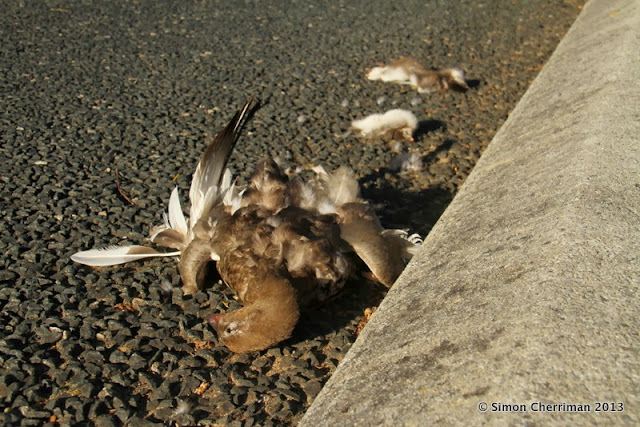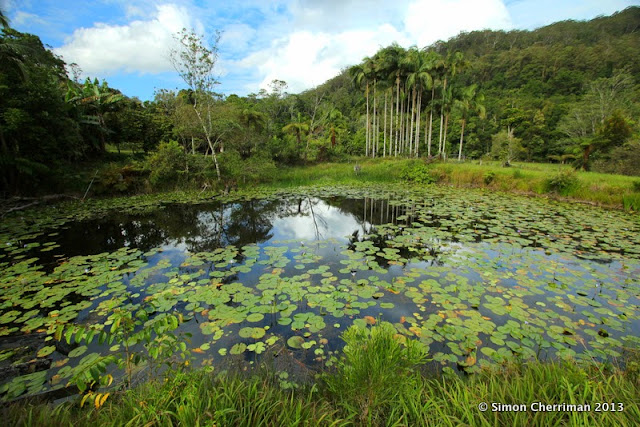This great little wetland (a delightfully concreted urban drain in Canberra) is home to a surprising array of wildlife, so I found recently. The attempt at preventing erosion by concreting the banks and building large rock walls held in place with wire mesh framework (and I say 'attempt' because downstream of this photo the banks are totally washed away by storm-water flooding!) has actually been quite beneficial to one species in particular. Here it is...
No - this eye doesn't belong to a
Tyrannosaurus rex!!... although its dinosaur-like appearance is a clear indicator of the ancient ancestors from which this creature evolved. It is in fact the eye of a Gippsland Water Dragon (
Physignathus lesueurii howittii), one of the large, semi-aquatic reptiles found in eastern Australia. These native lizards are named 'dragons' because of their resemblance to the creatures of Chinese mythology. Here's a wider view of one:
You can see the 'dragon-like' features which include thick, leathery scales, a spiky 'mohawk' (which is actually a row of pointed scales running down the centre of the neck, referred to as a 'nuchal crest'), and long, powerful legs equipped with sharp claws which make these lizards adept climbers. It's hard to get any sense of scale from the above image, but they can grow to a metre long, and weigh up to 1kg!
Water dragons are excellent swimmers and while walking around the drain I often head a 'plop' then saw one motoring across the surface of the water. Water travel is made easy with a thick, paddle-shaped tale, which is dorsally compressed (a scientific term meaning 'squashed in from the sides') and makes up about two-thirds of the body length. Sometimes they dive straight under and can remain submerged on the river bed for over an hour! When emerging from their watery hiding place, the wire mesh walls on our Canberra drain give them excellent grip, and the rock is a perfect place to bask, especially when carpeted with blankets of golden sunlight during the late afternoon. Being 'solar-powered', all reptiles rely on an external source of heat to fuel their metabolism, so scanning rocks and logs while walking is a good way to tune into lizard spotting. This smaller female dragon (noticeably greener in colour than the male pictured above, and with less bold markings) was half way through shedding her skin, and allowed me to crawl quite close for a photo. There is something refreshing about seeing the old skin peel off and make way for the beautiful new scales underneath.

Ok... let's finish with a challenge. Spot the dragon! Here are four photographs taken along the creek banks at our Dragon Drain, each one with a dragon hiding. Can you spot them all!?
(Click on each image to make it larger).















